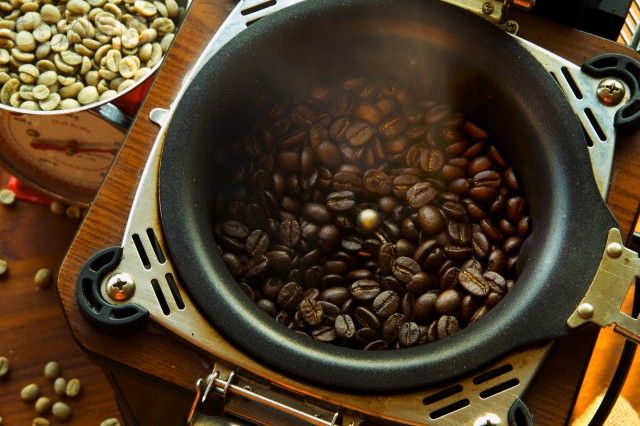How much is a cup of coffee worth? Calculation under ideal condition

Pickers pick coffee beans into cajuela bags hanging from their chests at a coffee plantation outside san jose, costa rica.
In Central America, the world's leading coffee-producing region, cajuela is both a coffee basket and a unit of work. Pick a "cajuela"(15 kg) coffee bean for $2.
That's not enough to buy the cheapest cup of coffee at Starbucks in San Jose, but it's the highest bid in Central America. Every harvest season, a large number of laborers from neighboring Nicaragua come to Costa Rica to specialize in coffee picking. Where they come from,$2 is almost a day's income.
In our usual perception, coffee represents a culture and way of life. Balzac drank 50,000 cups of coffee in his life and completed his masterpiece "Human Comedy,""I am not at home, I am in a cafe; if I am not in a cafe, I am on my way to a cafe" became a famous saying; Van Gogh's masterpiece "Night Open Cafe" was based on a cafe he visited when he lived in the French town of Arles; Bach even composed a special "Coffee Cantta" to entertain the cafe performance in Leipzig.
But the other side of history tells us that coffee is not only culture, but also inseparable from wealth capital. In 1773, the London Stock Exchange was born in Jonathan's Cafe; in 1817, a group of traders drafted the charter at the Donty Cafe on Wall Street, which gave birth to the New York Stock Exchange; and the collapse of coffee prices in the United States in 1880 directly gave birth to the New York Commodity Exchange and opened a new era of coffee as a speculative commodity.
Since its discovery in the 6th century AD, coffee has become the most consumed thing after water: more than a billion people drink coffee every day, and coffee beans are the world's second-most traded commodity after crude oil.
Today, coffee is an $80 billion-a-year business. But the world's 25 million coffee growers, who are on the front lines, are not getting much of a slice of the pie. A coffee bean can be changed up to 150 times from picking into cajuela to espresso. 55% of the profits are taken away by coffee giants such as Nestle, Kraft, Sally and Starbucks. Retailers and exporters earn another 35%. Farmers who sweat hard in coffee gardens earn only 10% at most.
This is only an ideal calculation.
In 2013, Starbucks raised prices when Brazilian coffee farmers burned their plunging beans, citing rising costs, but a cup of caramel macchiato cost more than three pounds of coffee beans; by 2014, Brazil suffered a rare drought that left many coffee farmers without crops, while coffee bean prices on the New York Board of Trade nearly doubled.
Looking at the chart of coffee futures prices in New York, it is like an electrocardiogram of a heart patient: coffee beans today are less than half what they were in 1977. A bottomless slump has become the norm for 134 years since it was traded as a futures, with merchants earning a lot of money and farmers often losing their money.
"Coffee is the greatest pleasure, coffee, coffee, it is sweeter than wine", in Bach's music, coffee is sung. For the average person, it is a mellow drink with bitter taste and sweet taste, which makes people feel happy; for merchants, no agricultural product brings such rich profits as it, which certainly makes people happy.
But for millions of coffee growers, what does coffee do for them?
Important Notice :
前街咖啡 FrontStreet Coffee has moved to new addredd:
FrontStreet Coffee Address: 315,Donghua East Road,GuangZhou
Tel:020 38364473
- Prev

Coffee health drinking coffee alone can not reach the carcinogenic amount.
A few days ago, an article entitled "you can't drink instant coffee, there are more carcinogens than smoking" spread on the Internet. The article says instant coffee is highly carcinogenic and contains higher concentrations of acrylamide than cakes, French fries, potato chips and cigarettes. Nguyen Guangfeng, an expert at the Food and Nutrition Information Center, said that this statement is a typical logical trap, and there is no food in the world.
- Next

coffee after breakfast.
More and more Chinese people have accepted mellow coffee, but do you really drink coffee? Taiwan's Kang
Related
- Beginners will see the "Coffee pull flower" guide!
- What is the difference between ice blog purified milk and ordinary milk coffee?
- Why is the Philippines the largest producer of crops in Liberia?
- For coffee extraction, should the fine powder be retained?
- How does extracted espresso fill pressed powder? How much strength does it take to press the powder?
- How to make jasmine cold extract coffee? Is the jasmine + latte good?
- Will this little toy really make the coffee taste better? How does Lily Drip affect coffee extraction?
- Will the action of slapping the filter cup also affect coffee extraction?
- What's the difference between powder-to-water ratio and powder-to-liquid ratio?
- What is the Ethiopian local species? What does it have to do with Heirloom native species?

